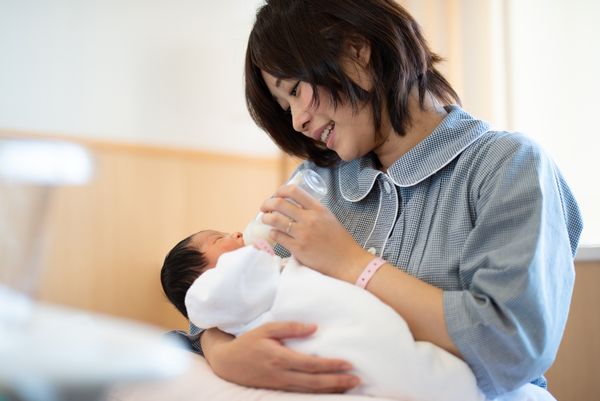As a new mom, you probably don't have any trouble falling asleep at night, but the same might not be true for your baby. For many parents, training babies to go to sleep and stay asleep is one of the most challenging aspects of raising children, but it doesn't have to be if you follow a specific method and stick with it.
Here are two methods to familiarize yourself with—one of them may be perfect for your little one.
1. The self-soothing, or Ferber method
Richard Ferber is a pediatrician who founded—and was former director of—the Center for Pediatric Sleep Disorders at Children's Hospital in Boston. He's a leading expert in children's sleep behavior, and he developed a method that allows babies to soothe themselves to sleep instead of relying on you to provide comfort.
The self-soothing method teaches babies to go to sleep easily and happily on their own, and it allows them to fall back asleep if they wake up without you there. This means you may get a better night's sleep too.
However, some parents don't like the fact that crying is often involved, and some believe that it could lead to long-lasting negativity toward bedtime.
After following a bedtime routine with comforting activities like bathing, reading a book or giving your baby a massage, Ferber's method involves putting your baby into his or her crib while still awake but drowsy. Say goodnight, then leave the room.
If your baby cries when you leave, you should let him or her cry for about three minutes, then go in and soothe the baby for a minute or two before leaving again. Don't turn the light on or pick your baby up—your goal is to just reassure him or her that you're there.
If your baby cries again, wait slightly longer to go back in—about five minutes—and keep increasing the time between visits until you get to 10 minutes. Each subsequent night, make the intervals slightly longer. Eventually, your baby will learn to fall asleep on his or her own without your presence.
2. The parent-soothing method
The parent-soothing method is another way to get your child comfortable with sleeping, and many parents like it because it allows them and their babies to develop a routine that works for them. The transition to sleep is often easier, and the method is more nurturing and gradual than the self-soothing method and may help build trust. Some experts say to avoid the self-soothing methods in the first six months because it undermines trust and can cause you to overlook an underlying medical problem that may be causing pained nighttime crying.
Basically, with parent-soothing methods a parent will rock, nurse, hold or sing to the baby until he or she falls asleep after going through a bedtime routine like the one mentioned in the self-soothing method. Some parents also choose to co-sleep with their child. This builds a relationship of trust and gives the baby positive memories associated with sleep, which may be beneficial as he or she grows older.
However, some babies may come to rely on a parent to put them to sleep, which could be problematic if they wake up during the night, because the parent will have to go in and repeat the process. If this happens, experts recommend responding to the child immediately to soothe or pick him or her up, regardless of how many times this occurs in the course of a night.
Some experts recommend a middle ground, in which the parent responds to the child quickly and may pick up the baby and verbally comfort the child, but doesn't nurse, pat or rock the baby back to sleep.
What's important is to find a method that works for you and your child and enables a healthy night's sleep for both of you.







